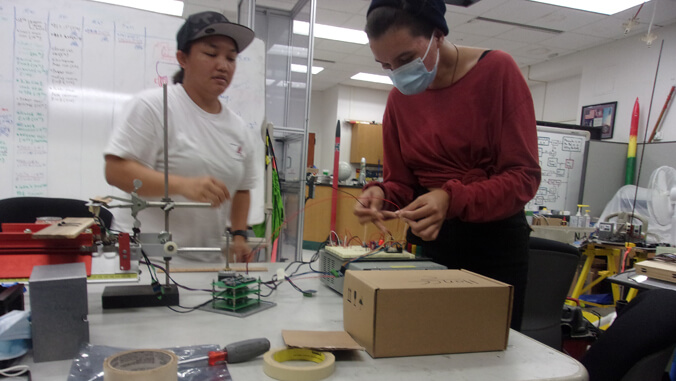
A NASA rocket scheduled for space launch in August will carry a scientific payload designed and built by University of Hawaiʻi Community College students. When the rocket launched from Wallops Flight Facility in Virginia reaches sub-orbital flight, it will release the student-built experiment.

The Project Imua Mission 10 students have been collaborating on this project for months. Windward CC students designed and built a camphor-powered sublimation rocket that will convert the camphor to gas to propel the small, light-weight rocket once the payload is released at the peak of the NASA rocket’s flight. The Honolulu CC team designed a camera system and inertial measurement unit devices to monitor the sublimation rocket’s motion. The entire payload is less than a foot long, weighs less than 15 pounds and is almost entirely encased in aluminum.
“Project-based research like Mission 10 offers UH Community College students unique opportunities to explore and prepare for high-tech, STEM careers while working alongside NASA engineers,” said Project Manager Joe Ciotti, a Windward CC professor. “For these students, this really is rocket science and one powerful confidence builder.”

Project Imua (to move forward in ʻōlelo Hawaiʻi) is a joint faculty-student enterprise of multiple UH Community College campuses in affiliation with the Hawaiʻi Space Grant Consortium that provides students with real-world, project-based learning opportunities. Students experiment with high-power rocketry and design and fabricate small payloads for space flight. Kauaʻi CC and Kapiʻolani CC have been part of earlier missions.
Later in June, Windward CC faculty mentor Jacob Hudson, Windward CC team lead Nikki Arakawa and Honolulu CC team lead D’Elle Martin will travel to the NASA facility to run the Project Imua Mission 10 payload through rigorous testing. Mission 10 represents the fourth time that a UH Project Imua payload will be launched into outer space. The first Project Imua payload was launched from Wallops in 2015.
Read more UH News stories on the Project Imua program.

